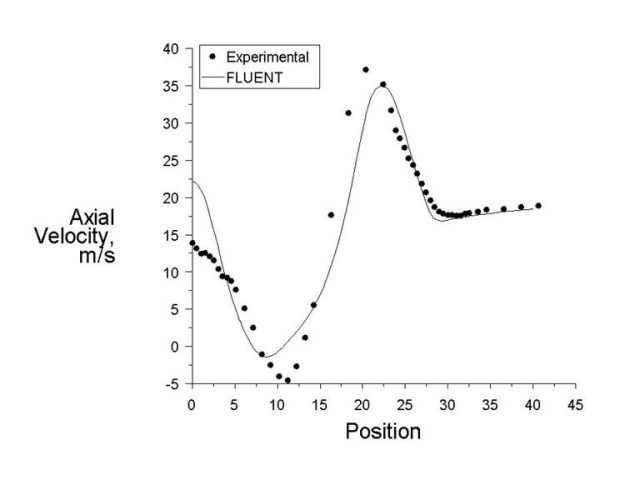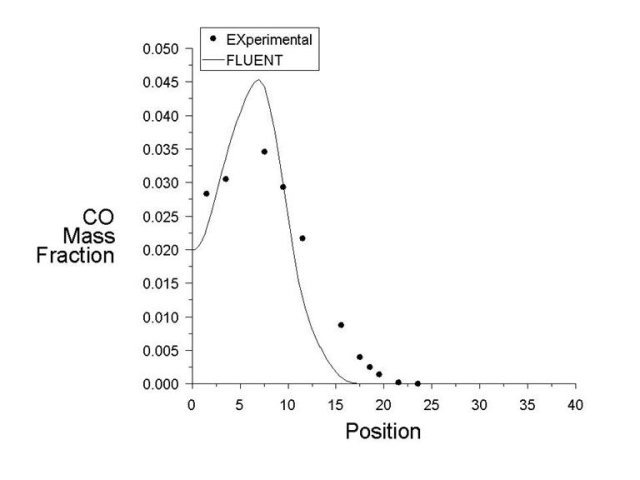VMFL025
VMFL025
Turbulent
Non-Premixed Methane Combustion with Swirling Air
Overview
| Reference |
| ||
| Solver | Ansys Fluent | ||
| Physics/Models | Turbulent swirling flow with reaction, non-premixed combustion model, Radiation heat transfer, Discrete ordinates method | ||
| Input File |
| ||
| Project Files | Link to Project Files Download Page |
Test Case
Air and Methane enter as separate streams into an annular chamber. Air issues as a swirling jet and also as a separate co-flowing stream with axial velocity. Both the air streams are free of methane. Species mixing and combustion take place in the axisymmetric chamber. Radiative heat transfer is taken into account.
| Material Properties | Geometry | Boundary Conditions |
|---|---|---|
|
Species mixture properties specified through PDF file Viscosity: 1.72 x 10-05 kg/m-s Refractive Index = 1 |
The fuel (methane only) inlet has a diameter of 3.6 mm. The air inlet for the annular shroud has an inner diameter of 50mm and an outer diameter of 60 mm. Co-flowing air inlet has an outer diameter of 310 mm. |
Methane inlet velocity: 32.7 m/s Axial velocity of swirling air: 38.2 m/s Swirl velocity of air: 19.1 m/s Co-flowing air velocity: 20 m/s Walls are adiabatic |






